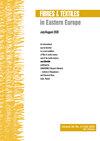天然染色产品的时尚消费:中日蓝染服装消费的跨文化研究
IF 0.9
4区 工程技术
Q3 MATERIALS SCIENCE, TEXTILES
引用次数: 1
摘要
摘要为了比较不同动机,基于计划行为理论(TPB)和跨文化可持续消费框架(CCSC),我们收集了301个中国样本和302个日本样本,采用结构方程模型(SEM)分析了天然染色服装的消费行为。结果表明,态度、社会规范和感知行为控制(PBC)对自然染色时尚消费意向和行为产生影响。在这些关系中,意向对主观因素与实际消费行为之间的关系具有控制作用。PBC直接影响消费者行为。此外,信仰体系和物质来源对所有TPB构建都有显著影响,其中物质来源的影响更大。比较中日两国,态度对中国人意向的影响大于日本人,但PBC对日本人意向的影响更大。从理论上讲,本文从跨文化的角度分析了TPB模式强度差异的形成因素。中日消费行为的差异也为天然染色的产业发展提供了现实的启示。本文章由计算机程序翻译,如有差异,请以英文原文为准。
Fashion Consumption of Naturally Dyed Products: A Cross-Cultural Study of the Consumption of Blue-Dyed Apparel Between China and Japan
Abstract To compare the different motivation, intention and behaviour between Chinese and Japanese consumers in naturally dyed fashion consumption we collected 301 Chinese samples and 302 Japanese samples and used a structural equation model (SEM) to analyse the consumption behaviour of naturally dyed apparel based on the planned behaviour theory (TPB) and cross-cultural sustainable consumption framework (CCSC). The results indicate that attitude, social norms and perceived behaviour control (PBC) impact naturally dyed fashion consumption intention and behaviour. Among these relations, intention has a controlling influence on the relationship between subjective factors and actual consumption behaviour. PBC directly affects consumer behaviour. Moreover, the belief system and material source have a significant influence on all TPB constructs, wherein material source has more influence. Comparing China and Japan, attitude has a stronger impact on intention for Chinese than Japanese, but PBC influences Japanese intention more. Theoretically, this paper analyses the factors forming the difference in the strength of the TPB model from a cross-cultural perspective. The differences in Chinese and Japanese consumption behaviours also offer practical insights for the industrial development of natural dyeing.
求助全文
通过发布文献求助,成功后即可免费获取论文全文。
去求助
来源期刊

Fibres & Textiles in Eastern Europe
工程技术-材料科学:纺织
CiteScore
1.60
自引率
11.10%
发文量
12
审稿时长
13.5 months
期刊介绍:
FIBRES & TEXTILES in Eastern Europe is a peer reviewed bimonthly scientific journal devoted to current problems of fibre, textile and fibrous products’ science as well as general economic problems of textile industry worldwide. The content of the journal is available online as free open access.
FIBRES & TEXTILES in Eastern Europe constitutes a forum for the exchange of information and the establishment of mutual contact for cooperation between scientific centres, as well as between science and industry.
 求助内容:
求助内容: 应助结果提醒方式:
应助结果提醒方式:


